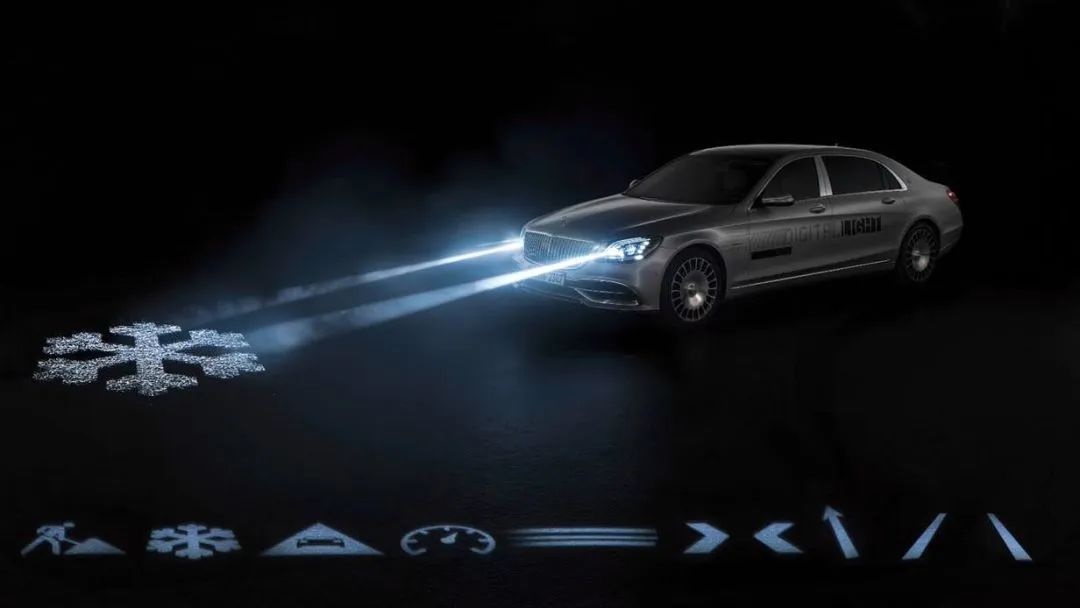The car has undergone numerous changes during its 130-year history. One of the most fascinating areas in its development is the innovation in car lighting. This is not only the "eyes" of a car but sometimes even a crucial element that determines the character, recognizability, and other traits of a car.
Recently, a new type of lighting technology that continuously spreads is projection headlight, launching a new interactive technology revolution in car lighting.
Projection headlights, simply put, turn each headlight into a "high-definition projector". They can provide better lighting, finer area resolution, and show additional guiding information to the driver.
This is a new task for lighting systems, giving lights the ability to "talk". Whether interacting with people inside or outside the car, it offers a good sense of interaction.
Beyond basic functions like anti-glare, high-resolution headlights are bringing new features like driving assistance. For instance, when a car passes through a construction zone, the vehicle width display function can inform the driver of the car's width ahead. The headlights project two beams on the ground corresponding to the vehicle's width, helping the driver to evaluate the driving path and passing capability.
When the driver's lane encounters unexpected dangers, light-based warnings (arrows) can be projected onto the road. For example, on icy or snowy roads at night, when braking distance is insufficient or speeding, the warning can be directly projected in front of the car.
The purpose of projecting near the driver's line of sight is to effectively warn the driver without causing the distraction of looking elsewhere. In real night driving tests, this is more perceptible compared to the same warnings on a head-up display.
In fact, these functions are all automatically activated by the vehicle's sensors analyzing the driving situation.

As shown in the picture above, each chip in the high-definition projection headlights has more than one million micromirrors, meaning each car's light can reach a resolution of over 2 million pixels. At the same time, when the cameras and sensor systems in the vehicle detect other road users (pedestrians, road vehicles, etc.), the core processor evaluates the data and digital navigation map within a few milliseconds, sending instructions to the headlights to make the best adjustments for light distribution under various conditions.
Of course, achieving a cool Demo demonstration is not difficult; the more important issue for it is whether this micromirror matrix projection system can meet the mass production objectives of the automotive industry. Every system component must comply with the mechanical, electronic, chemical, thermal, optical, and other standards required by automobiles and must be designed to meet automotive requirements. Close cooperation among microelectronics component developers, lighting system developers, and car production personnel is crucial for preparing the product for mass production.
With the testing of new lighting technologies, laser headlights, LED headlights, and new use cases for OLEDs are further being realized. Projection headlights may be the next gradually popularized headlight technology. Although there are currently many uncertainties, the future design for interaction between passengers and drivers with the car will open new opportunities for automotive lighting.
People may be more interested in knowing what new roles lighting will play in future autonomous cars.

Inquiry
Excellent Customer Service Ability
Key customer manager mechanism
Oversea supporting points
Excellent Process Control Ability
Fully automated production
DMC traceability management
VDA6.3 / IATF16949 verifications
Excellent R&D Ability
Advanced technology new product development cooperation
Cost-effective optical solution proposal based on customer needs
Ecosystem resource integration